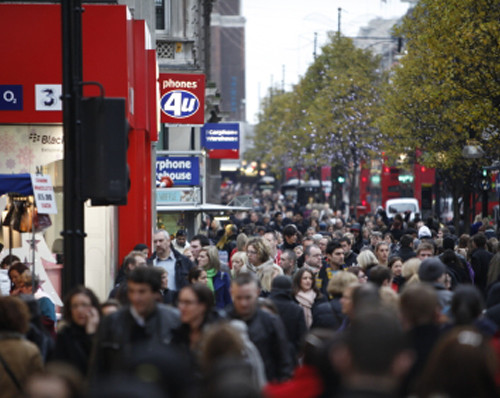The older you get, the more you realise that it is important to ‘do something’ now – to make a positive difference – rather than wait until tomorrow and try to ‘do everything’.
The image of the man walking along the beach tossing starfish back into the sea comes to mind. “Why are you bothering – that won’t make any difference” says the bystander. As he tosses another starfish into the surf, the man replies: “It will to that one.”
I have had the same thoughts recently regarding the premature reports of the death of the High Street. There are many who claim that a) the High Street as a retail destination is dead and/or b) the Internet is now an unturnable tide that will wash away all traditional retail in its wake.
There are many in the industry, for whom I have enormous respect, that are arguing tooth and nail for major changes through very grand schemes. Here’s just a small shopping list:
1) Work to change the problems caused by multiple-ownership of property in our High Streets to enable planners to better create improved town and city centre environments
2) Campaign to reduce the business rate burden on those who are currently facing the brunt of the tax bill in our town and city centres
3) Fight to reduce the spiralling rents that have caused so many retailers to re-think their positioning on the traditional High Street
4) Lobby to prevent any more out-of-town retail development that will be detrimental to town and city cent retail offerings
5) Argue with councils to reduce or remove car parking charges from town and city centres
6) Stop any more charity, pawn or betting shops from opening
7) Legislate to change the tax paid by online businesses to level the playing field with those in the bricks and mortar retail space
These are all worthy in the case for creating a utopian High Street. Some make more sense than others. Some may even be achievable albeit in piecemeal chunks. But on what timescale? If each of the problems were a thousand starfish …
So what is achievable NOW?
I have spent the last 20 years working in the UK’s retail industry – particularly in how shopping destinations communicate with shoppers and vice versa. The last three of those years have been spent researching how digital and social media have changed that landscape – looking at the problems as well as the opportunities afforded by changes in the way we all communicate. I have helped to launch Mall-to-Mobile (a service for shopping centres that creates 365 days-of-the-year communication) and am involved in launching a new project that will soon be making waves in doing exactly the same for town and city centres.
Increasing numbers of shoppers adore online. Why? It is convenient. It is easy. It is perceived to be cheap. We can opt in/out of buying from those we like/dislike. We can like, follow and interact with our favourite brands. We can recommend and refer. We can share. We can comment, question, praise, complain. It is ALL in the very palm of our hand.
The High Street is precisely nowhere when it comes to digital and social media interaction with customers.
Shoppers increasingly turn their backs on High Streets. Why? For all the opposites: it is no longer as convenient. It can be difficult. It is perceived as more costly. We are stuck with the retail offer that is there – like it or not. We can’t like, follow or interact with that destination. Communication is one way. There’s no one to reply to our comments, to answer our questions. We might praise or complain … but who is listening – let alone responding. The High Street is precisely nowhere when it comes to digital and social media interaction with customers.
But it can be.
Research in Q1 of this year looked at more than 300 retail destinations – a mix of shopping, town and city centres. Almost 95% have websites that do not function properly on a mobile. Of the towns and cities, not one has seven days-a-week social media engagement. That is because they – and almost every town or city centre partnership, town team, pilot project (call them what you will) – do not understand what their customers want nor what their retailers and businesses need. And of the handful that do, they do now have the skillset, time or resource to deliver it.
The use of the Internet – and in particular responsive digital and social media channels – can turn the tide for High Streets. It can make them convenient. It can convey their cost effectiveness. It can demonstrate the breadth and depth of the offer. It can allow customers to like, follow and interact with their chosen destination. It can provide two-way communication, 365 days of the year. It can reply to comments, answer questions, acknowledge praise and deal with complaints. It can connect the community. The High Street can be in the palm of customers’ hands.
All the ‘grand schemes’ may take 5 years to deliver. Some even longer term – perhaps even generational. Day-to-day digital and social media interaction for High Streets is available now. I know, because I am helping to make it happen: my work with colleagues at DestinationCMS, be it Mall-to-Mobile with shopping centres or with town and city centres, is making a positive difference, day-by-day, one-by-one.
We might not save them all. Some may sink. But the High Street can be brought into the Digital Age, people just need to ‘like’ the idea.






